JB Insights
Raniwala 1881:Blending timeless artistry with a contemporary sensibility
Raniwala 1881 is a heritage-driven luxury jewellery brand that seamlessly blends traditional Indian craftsmanship with contemporary design. Abhishek Raniwala, Co-Founder & Creative Director – Raniwala 1881 speaking to JewelBuzz defined the legacy of the brand, its USP, the design philosophy that is a testament to the fusion of tradition and innovation …and more
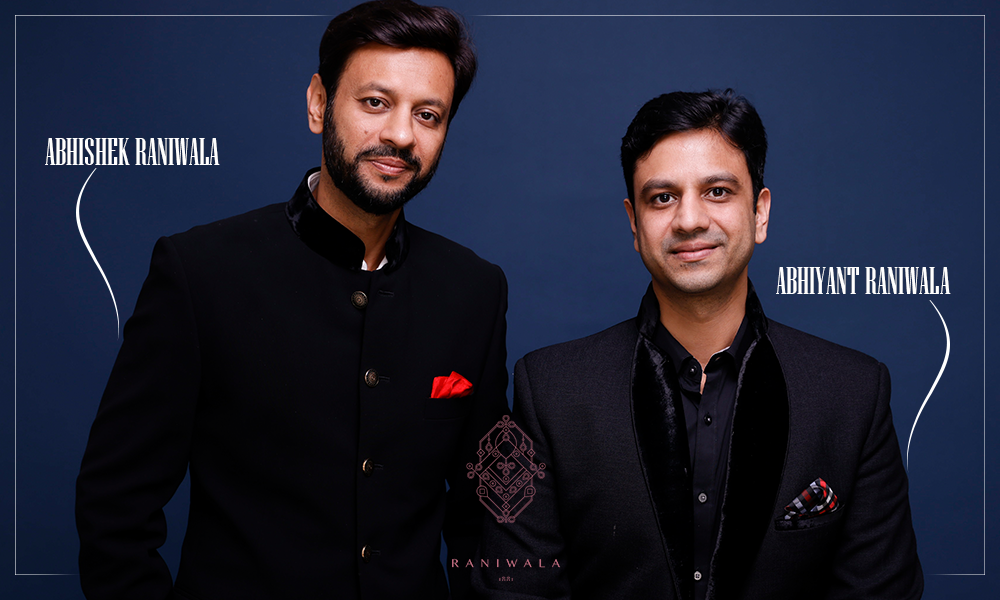


How do you define the legacy of Raniwala 1881
The legacy of Raniwala 1881 is a testament to the fusion of tradition and innovation, rooted in the rich cultural heritage of Rajasthan. It began with the visionary Rai Bahadur Champalal, a connoisseur of gems and stones whose aristocratic taste and passion for fine craftsmanship set the foundation for a journey in the world of jewellery. His eye for opulence and elegance inspired future generations to carry forward his name with pride.
Established in 2007, Raniwala 1881 honors this heritage by blending timeless artistry with a contemporary sensibility. This seamless amalgamation caters to the modern woman while staying deeply connected to the traditions and aesthetics of Rajasthan. The journey has been marked by a commitment to exceptional craftsmanship, attention to detail, and a profound respect for the legacy of jewellery design.


- Explain the USP of your brand.
Raniwala 1881 is a heritage-driven luxury jewellery brand that seamlessly blends traditional Indian craftsmanship with contemporary design. Rooted in the rich cultural legacy of Rajasthan and inspired by the vision of Rai Bahadur Champalal, the brand is renowned for its intricate handcrafted techniques like Jadau, Kundan, Meenakari, and Polki. Each piece reflects the artistry of skilled Jaipur-based artisans and is elevated by the use of vibrant colored gemstones and exquisite polkis. By combining innovation, such as Computer-Aided Design, with time-honored techniques


- What is your design philosophy?
Raniwala 1881 design philosophy is rooted in the seamless fusion of tradition and modernity, where every piece is a reflection of India’s rich heritage, reimagined for the contemporary world. At its core lies the belief in preserving age-old craftsmanship techniques like Jadau, Polki, Kundan, and Meenakari, while infusing them with innovative design elements that resonate with modern sensibilities.
- Kindly provide details of your product offerings, bridal & jewellery collections.
Raniwala 1881 specializes in crafting exquisite, handcrafted luxury jewellery that reflects India’s rich heritage while catering to contemporary tastes. Each piece is a testament to meticulous craftsmanship, timeless design, and cultural authenticity.
- How do you ensure that your Jewellery designs reflect Jaipur’s cultural heritage while appealing to the evolving tastes of younger generations?
Raniwala 1881 ensures its jewellery designs reflect Jaipur’s rich cultural heritage while appealing to younger generations by seamlessly blending tradition with modernity. Jaipur, renowned as the hub for gemstones and Jadau jewellery, serves as both the inspiration and foundation for every design. By collaborating with skilled local artisans, whose craftsmanship has been honed over generations, the brand preserves the intricate techniques and cultural narratives intrinsic to Jaipur’s legacy.
At the same time, Raniwala caters to the evolving tastes of the younger generation by introducing versatile, design-centric collections like Raas Autumn Winter 2024-25, which reimagine traditional aesthetics with a contemporary flair. These pieces, such as polki necklaces and statement earrings, embody timeless beauty while resonating with the values and personal journeys of modern brides.

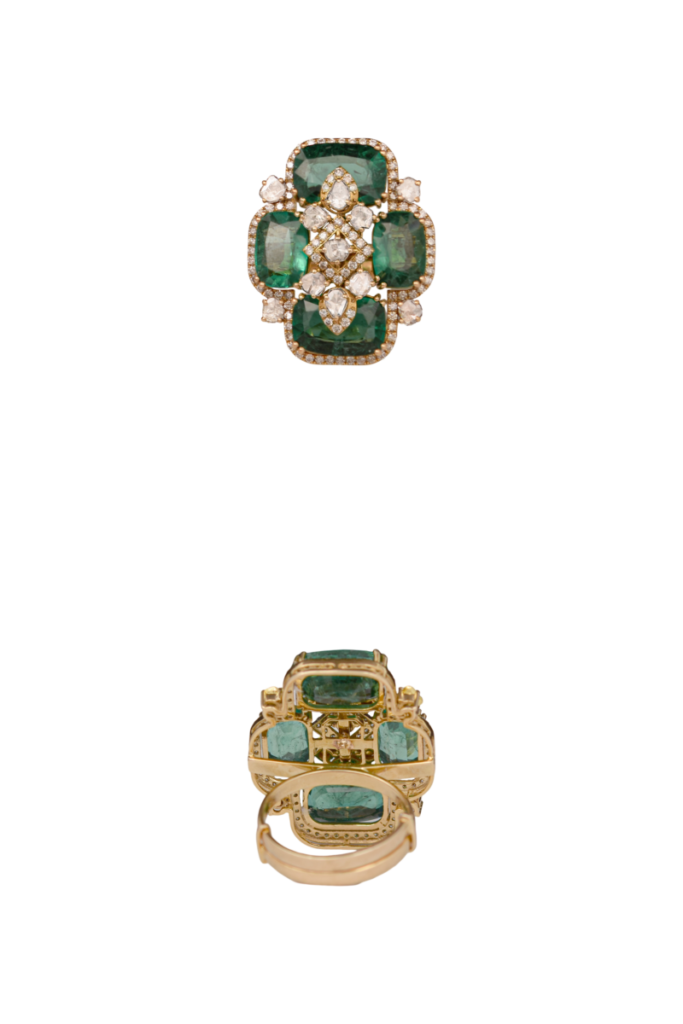
- What role does sustainability play in your sourcing of materials and crafting processes for your jewellery collections?
Sustainability lies at the heart of Raniwala 1881’s philosophy, seamlessly woven into the sourcing of materials and crafting processes for our jewellery collections. We prioritize using ethically sourced gemstones, conflict-free diamonds, and recycled gold, ensuring minimal environmental impact while upholding the integrity of our creations. Our crafting processes focus on reducing waste and promoting efficiency through a blend of traditional handcrafting techniques like Jadau and Polki, and modern technologies like CAD, which optimize designs and minimize resource consumption. Beyond materials, we are deeply committed to empowering our local artisans in Jaipur, providing fair wages, safe working conditions, and fostering sustainable livelihoods for communities that have practiced their craft for generations.
- How does your brand differentiate itself from other traditional jewellery makers in Jaipur in terms of craftsmanship and innovation?
The key is to be authentic. In any industry, working with any project or idea, authenticity goes a long way. Especially for the luxury/fashion industry, where the market is so saturated already it becomes almost tough to keep your name shining. We focus to keep in touch with our client’s mindset. It has majorly to do with the seasons. Our collections are driven by campaigns and themes which stems out from the seasonal changes in our nation. One notable factor when it comes to authenticity and quality is the IGI Certification. We extend our gratitude to IGI for ensuring the quality always and helping us stay true to our craft

- What specific measures have you taken to make your Polki and Jadau jewellery accessible to a global audience without compromising its cultural authenticity?
Raniwala 1881 strives to make Polki and Jadau jewellery accessible worldwide while preserving cultural authenticity. The brand combines innovation with tradition by creating versatile, design-focused collections that cater to modern tastes while maintaining the heritage of Indian craftsmanship. Leveraging technology like CAD ensures precision and scalability without compromising intricate detailing.
The expansion plan includes establishing retail stores in key international markets and enhancing its e-commerce platform for seamless global access. Emphasizing storytelling, Raniwala educates clients on the heritage and cultural significance of its jewellery. Collaborating with artisans in Jaipur, the brand sustains traditional handcrafted techniques, ensuring authenticity and integrity. By bridging tradition with modernity, Raniwala 1881 makes its jewellery meaningful and relevant to a global audience.

- How do you incorporate modern technology, such as AI, in jewellery designing?
Raniwala 1881 incorporates modern technology like CAD (Computer-Aided Design) and high-tech machines to enhance the precision, creativity, and efficiency of jewellery designing while preserving the essence of traditional craftsmanship. CAD enables the design team to visualize intricate patterns and experiment with shapes, proportions, and detailing digitally before translating them into physical pieces. It helps in creating 3D models that allow karigars (artisans) to better understand the design philosophy and ensure flawless execution.
- Where does Raniwala see itself in the coming years- what is roadmap?
Raniwala 1881 envisions itself as a global ambassador of Indian heritage craftsmanship, creating a legacy that bridges the past and future. The roadmap for the coming years includes expanding its presence in both domestic and international markets to establish itself as a leading name in luxury and bridal jewellery. The brand aims to continue innovating by introducing more contemporary designs while preserving the authenticity of age-old techniques like Jadau, Kundan, Meenakari, and Polki.
Raniwala also plans to strengthen its digital footprint by investing in technology to enhance customer experience, offering immersive online shopping and bespoke customization services. Collaborating with global designers and curating exclusive collections for international platforms is also part of their growth strategy.
- Where is Raniwala 1881 presence beyond Indian market?
Currently, Raniwala 1881, known for its legacy and exquisite craftsmanship, has focused its presence largely on the Indian market and niche global clientele. Beyond India, it likely caters to select high-end clients in countries with a significant demand for heritage jewellery, such as the UAE, USA, and UK, through private sales or exclusive collaborations.

Education
Natural and Lab-Grown Diamonds: Two Sparkling Paths Defining the Future of Luxury Jewellery”
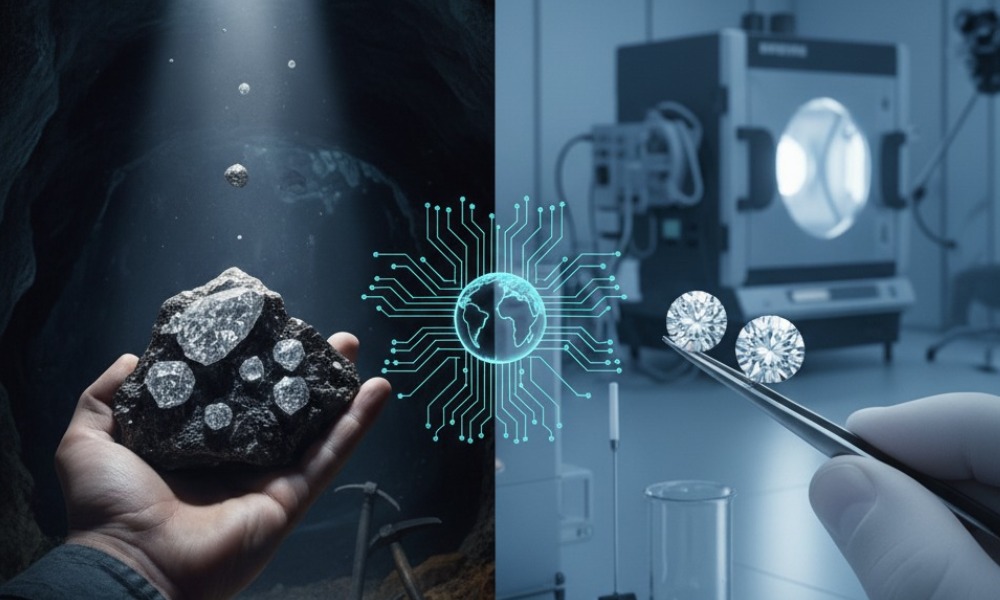
The diamond landscape is evolving faster than ever. As technology meets tradition, Natural and Lab-Grown Diamonds are redefining how consumers, retailers, and brands perceive luxury. Both share identical chemical and optical properties, yet their origins, pricing, sustainability factors, and emotional appeal set them apart.
With the global diamond market at a turning point, understanding these distinctions helps both jewellery buyers and industry professionals make informed decisions in 2025 and beyond.
From the Earth’s Depths to Cutting-Edge Labs
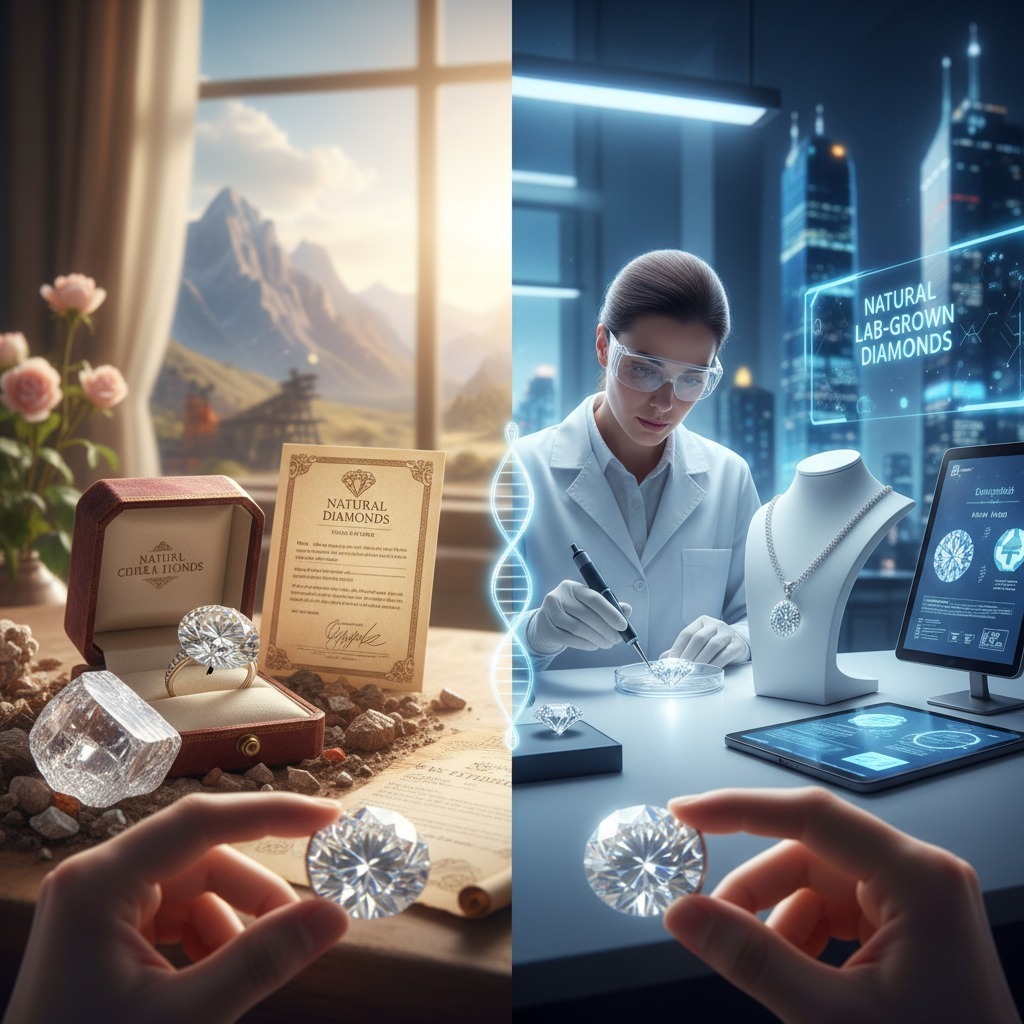
Natural diamonds are formed over billions of years deep within the Earth’s mantle under immense heat and pressure. They emerge through volcanic activity and are then mined, cut, and polished before reaching the consumer.
In contrast, lab-grown diamonds (LGDs) are created inside advanced laboratories using High Pressure High Temperature (HPHT) or Chemical Vapor Deposition (CVD) technology. These processes replicate natural conditions, producing diamonds that are chemically, physically, and optically identical to those mined from the Earth — but grown in a matter of weeks.
Appearance and Durability: Identical in Every Sparkle
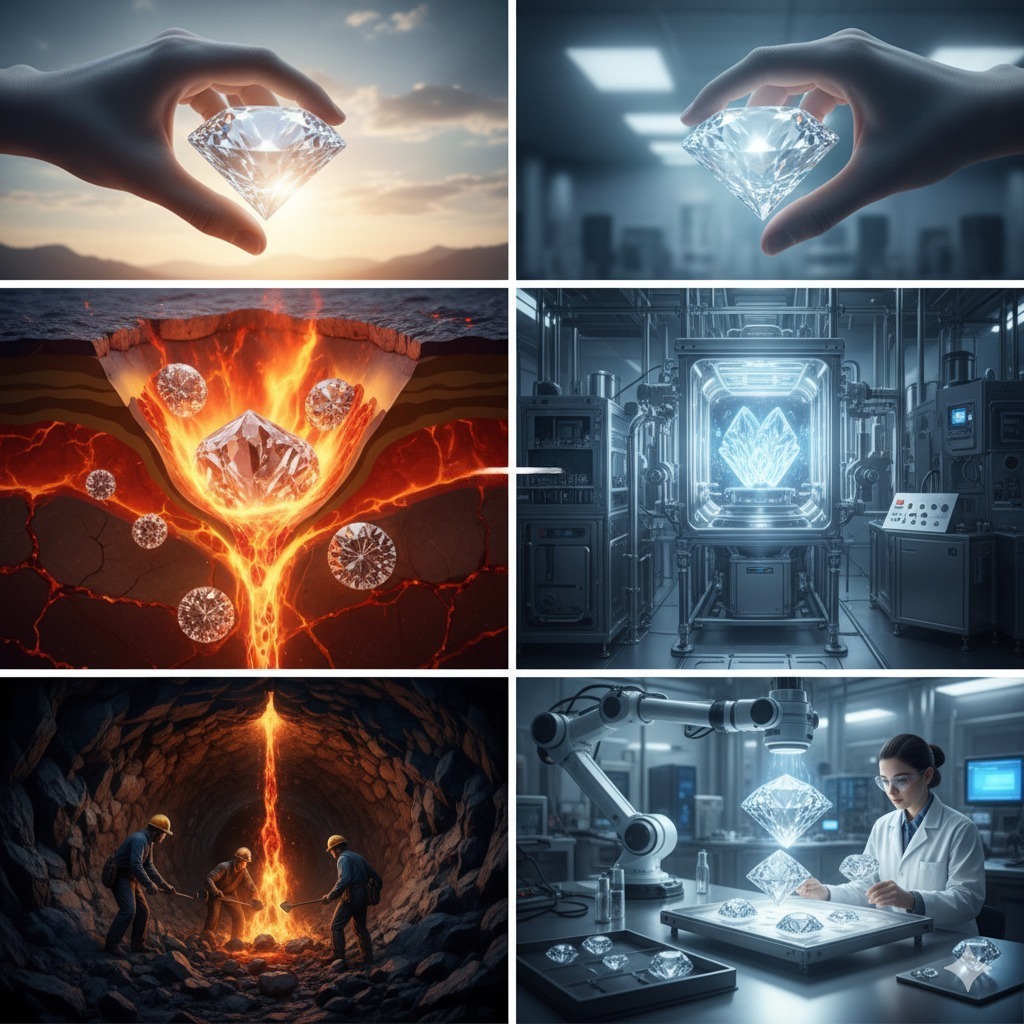
Both natural and lab-grown diamonds score a perfect 10 on the Mohs hardness scale, meaning they are equally durable, brilliant, and suitable for everyday wear. Even expert gemologists require specialized instruments to distinguish between the two.
Modern certification authorities such as GIA, IGI, and SGL ensure complete transparency by clearly mentioning whether a diamond is natural or lab-created on its grading report — maintaining consumer trust and industry integrity.
Pricing and Market Accessibility
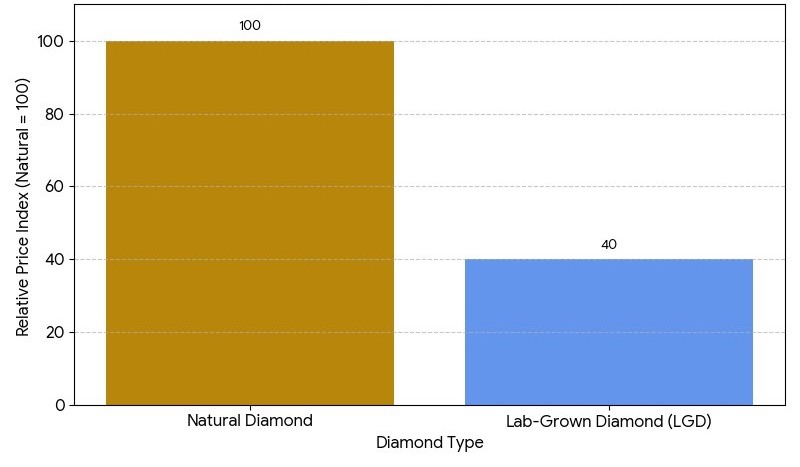
One of the most defining aspects of lab-grown diamonds is affordability. On average, they cost 50–80% less than natural diamonds of similar size and quality. This has opened the luxury jewellery market to younger, value-conscious consumers, particularly Millennials and Gen Z, who view LGDs as sustainable and budget-friendly choices.
However, natural diamonds continue to command premium value due to their rarity, heritage, and perceived emotional depth — making them a timeless investment for collectors and traditional buyers.
Sustainability and Ethics in Focus
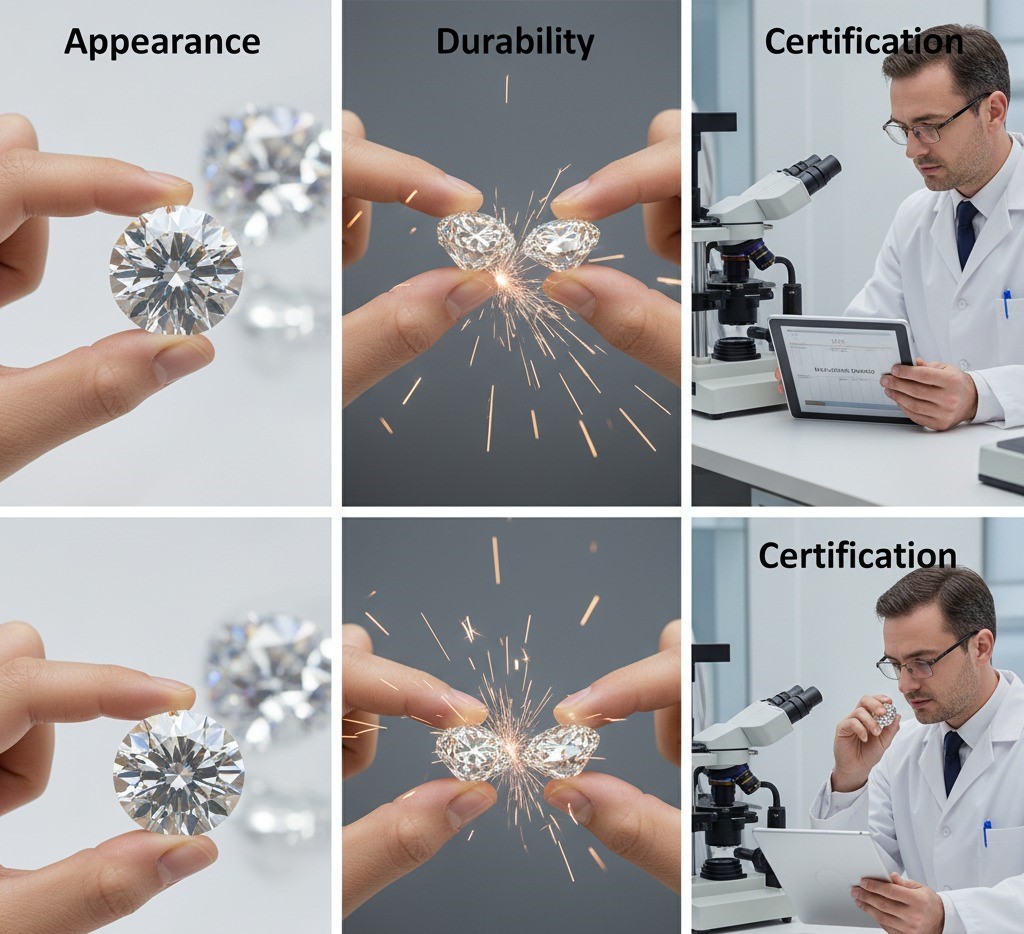
In today’s conscious consumer era, sustainability and ethical sourcing play a critical role in purchase decisions. Lab-grown diamonds have gained popularity for their minimal environmental footprint and traceable production methods.
Meanwhile, leading natural diamond mining companies have advanced significantly in eco-restoration, carbon reduction, and community programs, ensuring responsible mining practices. As both sectors innovate, the diamond industry as a whole is moving toward greater transparency and social responsibility.
India’s Pivotal Role in the Diamond Evolution

India, particularly Surat, has emerged as the global hub for lab-grown diamond production, driving exports and technological innovation. According to trade data, lab-grown diamond exports from India have surged sharply in 2025, solidifying the nation’s role as a world leader in both natural and synthetic diamond expertise.
Retailers across India are now offering dual counters — one for natural diamonds and another for lab-grown — to cater to the evolving preferences of modern consumers.
Changing Consumer Perceptions

The perception of lab-grown diamonds has shifted dramatically. Once viewed as “alternatives,” they are now celebrated as symbols of modern luxury and sustainability. However, natural diamonds continue to represent heritage, emotion, and exclusivity — values deeply rooted in the cultural and emotional fabric of jewellery buying.
The brilliance of a diamond, whether mined from the Earth or grown in a lab, remains eternal. The difference lies not in its sparkle, but in the story it tells — one of timeless beauty versus technological innovation.
As the jewellery industry embraces both, the future of diamonds is not about choosing one over the other — it’s about celebrating diversity, transparency, and conscious luxury.
-

 National News13 hours ago
National News13 hours agoRBI accelerates repatriation of its gold reserves, 64 ton brought home last 6 months
-
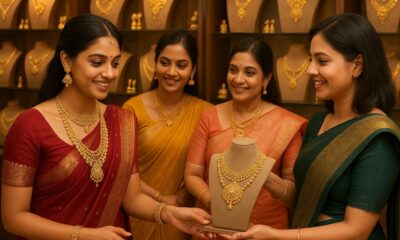
 National News15 hours ago
National News15 hours agoGold price decline will stimulate shopping during November-March wedding season
-

 DiamondBuzz12 hours ago
DiamondBuzz12 hours agoLesotho’s Largest Diamond Mine Faces Imminent Closure Without State Tax Relief
-

 Education11 hours ago
Education11 hours agoNatural and Lab-Grown Diamonds: Two Sparkling Paths Defining the Future of Luxury Jewellery”





